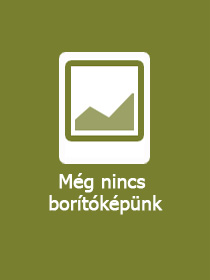
| ISBN13: | 9781350510616 |
| ISBN10: | 13505106111 |
| Kötéstípus: | Keménykötés |
| Terjedelem: | oldal |
| Méret: | 234x156 mm |
| Nyelv: | angol |
| 700 |
Translingual Creative Writing Theory, Practice, and Pedagogy
GBP 85.00
Kattintson ide a feliratkozáshoz
In a challenge to monolingual, Anglophone dominated creative writing workshops, this book explores why and how students' multilingual backgrounds and lack of fluency with the English language can emerge as assets rather than impediments to artistry and creativity. Grounded in the Chinese tradition of Daoism as an ongoing discourse, this exploration uses rigorous academic readings of the philosophical text, the Zhuangzi, as an analytical framework and takes a translingual approach to writing where translation and composition intersect, inscribing one language upon another within a single text. With concepts that resist expression such as inspiration, uncertainty, non-knowing, spontaneity, unity, forgetting the self, and the perfection behind the imperfection of language, Jennifer Quist demonstrates how Daoism's theories and metalanguage can re-imagine creative writing education whilst de-naturalizing the authority of English and Euro-American literary traditions. With analytical lenses derived from East Asia given context through translations of Chinese educators' primary accounts of the history and theory of postsecondary creative writing education in 21st-century China, Quist develops a method for examining the practices of exemplary translingual writers from China, Japan, and their diasporas.
Featuring translingual writing prompts and practices for individual or classroom use by students at all levels of multilingualism, Translingual Creative Writing Theory, Practice, and Pedagogy opens up the current workshop model and discloses the possibilities of linguistic transcendence for instructors and students. With writing strategies based in cross-cultural collaboration and balanced with de-Anglicization of creative writing pedagogy, this book calls to rework the structures, methods, and metaphors of the workshop and presents ideas for more collaborative, collective, equitable, diverse, and inclusive programs.
Introduction - Global Multilingualism And Classroom Translingualism
Into China
Beyond Structure and Into the Way
Chapter 1 - Creative Writing Education: History And Hegemony
US Origins of the Workshop: Nationalism, Individualism, Humanism, Formalism
Traditional Creative Writing Education: Forms, Rubrics, and Reading as a Writer
Chapter 2 - The Case of Creative Writing Education in China
Creative Writing and Nationalism Beyond the US: China and Elsewhere
Translating Creative Writing Education
Chapter 3 - Creativity and the Multilingual Writer
Creative Writing Teaching: Triads, Translation, and the Translingual
The Translingual and the Chance at Transcendence
Literary Studies or Language Acquisition in Translingual Creative Writing
Cosmopolitanism and Creative Writing Education in East Asia in English
Chapter 4 - Creative Turn in Translation, Translational Turn in Creative Writing
A Creative Turn
The Self and Individualism in Translingual Creative Writing Education
Foreignization in Translingual Creative Writing Education
Chapter 5 - Theorizing Translingual Creative Writing
Silence on Theory, Silence in Theory
Nonsense and Non-silence
Euro-American Romanticization of Creativity
Classical Philosophy in Contemporary Chinese Creative Writing
Daoism, Transcendence, and the Way
Rejections of Alternatives: The False Dichotomy of English/Non-English Writing
The Inspirational Shen in Translingual Creative Writing
Graham's List - Number One: Free-roaming Focus on the Whole
Graham's List - Number Two: Spontaneity
Graham's List - Number Three: Forgetting the Self in Total Absorption
Chapter 6 - Readings in Translingual Writing
Translingual Chinese-English Texts Across an "Abyss"
Early Chinese-English Translingual Fiction: Lu Xun's True Story of Ah Q
Zero Translation and Brokering Culture: Lin Yutang's Moment in Peking
Defamiliarizing Syntax and Idioms: Ha Jin's "The Bridegroom"
Translating Signatures: Xiaolu Guo's A Concise Chinese-English Dictionary for Lovers
Fictitious Ethnography: Yoko Tawada
Surface Translations: Tawada's "Hamlet No See"
Chapter 7 - Teaching Translingual Creative Writing
Globalizing and Localizing the Creative Writing Workshop
Shifting Creative Writing Workshop Metaphors
Translingual Practices - Superimposed Metaphors, Fictitious Ethnography,Surface Translation
Dynamic Multilingualism and Challenging Hegemonic Individualism
Technology in Translingual Creative Writing: Yoko Tawada's "Changeling"
Translingual Creative Writing Education Ethics and Collaboration
Bibliography
Index




